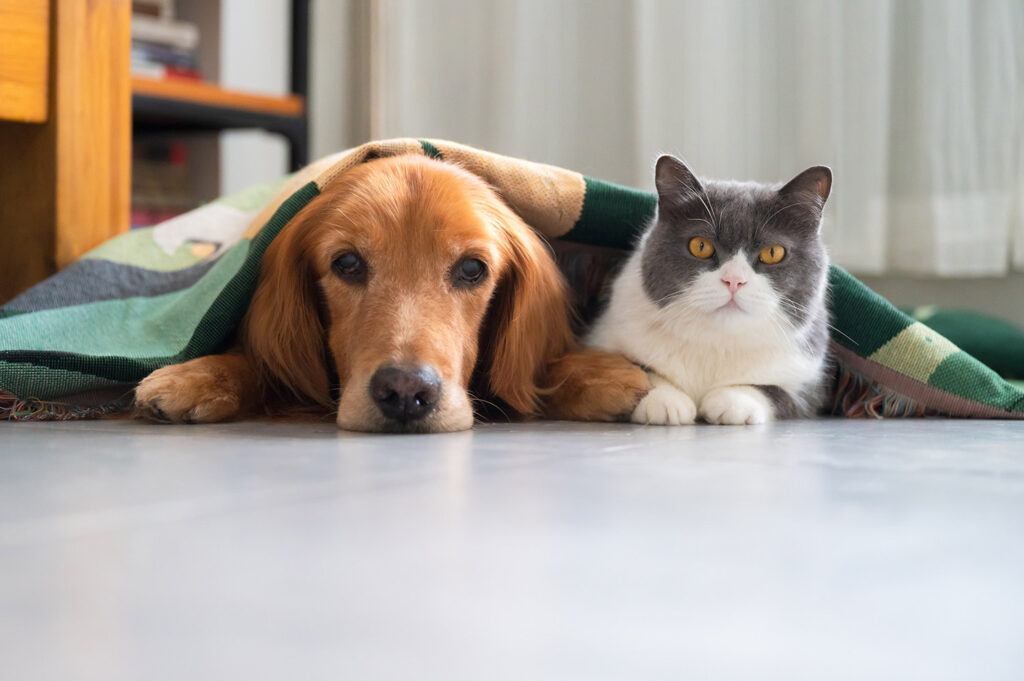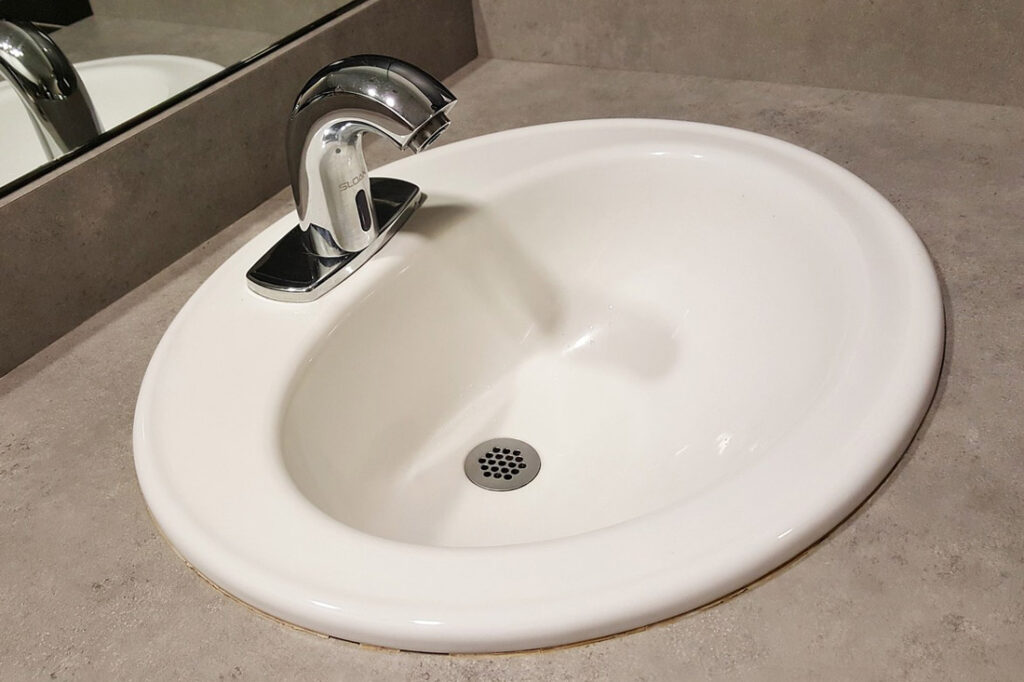Please note: This post is intended to educate cat parents with declawed cats but we do not support declawing cats. Still, it's a complex topic and if you want to learn more about both sides of the argument, I highly recommend this article from the BBC.
Declawing can change a lot about a cat and it's way more than just a short nail trim. We've talked about how declawed cats may have a hard time jumping but that's really just the start of the problems. We also know that declawing can lead to long-term pain and increased aggression but what about cat behaviors like kneading?
Do declawed cats still knead?
Many declawed cats will still knead since claws aren't a requirement for kneading. Still, many declawed cats may knead less or not at all as a result of painful paws. Long-term paw discomfort isn't uncommon in declawed cats and kneading could make this discomfort worse so some declawed cats will simply avoid the behavior.
Let's look a little closer at what's going here and why some declawed cats will still knead while others won't.
Why Do Cats Knead?
We need to understand the basics of why cats knead before we look at how things may be different for declawed cats so let's quickly look at three reasons why so many of our feline friends love to knead.
Just keep in mind, kneading is a big subject so this isn't a comprehensive explanation, just enough to help us learn more about declawed cat behavior.
They May Be Marking Their Territory
Cats are naturally very territorial creatures and are always looking to claim, maintain and sometimes even obtain turf.
I know, it can be hard to imagine our cats in some kind of constant power struggle for territory but it's actually much more subtle than that. Behaviors like scratching, cheek marking, and even kneading all help cats deposit their scent and let the world know what's theirs.
Cats have scent glands in their paws that help them leave their scent. These are more often engaged when scratching but they can also be active when kneading.
They're Happy!
Sometimes kneading doesn't need to be any more complicated than a sign of a happy cat.
Kneading is one of the first behaviors that cats will ever do and as a kitten, they would knead against their mother to stimulate milk production. It's safe to say that the memory of being a warm little kitten kneading to get milk is probably a good one.
We can't know if cats actually remember that experience but instead, it's likely that the kneading behavior is associated with comfort and security on some level even if it is subconscious.
To Build The Perfect Bed
Kneading can also be a way for cats to prepare their bedding for a nap. In the wild, cats would do this to soften up leaves, dirt, or other natural bedding. At home, this usually means kneading their favorite blanket before they go to take a nap. Some cats can even get a little carried away and not only knead blankets before a nap but also bite them.
These Are All Things Declawed Cats Do Too!
One thing should be clear as we look at all these reasons: declawed cats will want to do all these things just like any other feline.
Declawed cats will still have a strong drive to claim territory, a desire to build the perfect bed, and likely have long-standing positive associations with kneading just like any other cat.
But to understand why declawing could change these drives for some cats we need to make sure we understand exactly what declaw surgery entails.
What Really Is Declaw Surgery?
When people first hear the word declaw, they might imagine a really close tail trim or some type of advanced scientific procedure that prevents claw growth.
But the reality is much different from anything like that. The entire name of the procedure is a bit misleading and instead of just removing claws cats actually have the entire last third of their toes removed.
That's the only way to truly make the procedure permanent and anything less means that claws will grow back. If this procedure were done on humans, it would be like removing part of your finger at the last knuckle.
Do Declawed Cats Knead For Different Reasons?
As traumatic as declaw surgery can be, there's nothing about it to suggest that it causes cats to knead for a different reasons compared to cats with claws.
At least as far as we know.
We can't ask our cats but it's safe to say that declawed cats knead for all the same reasons as clawed cats.
Why Do Some Declawed Cats Stop Kneading?
There are a few possible reasons why a declawed cat may stop kneading.
Declawed Paws My Be Painful
In short, declawing is a painful procedure and for some cats kneading may just be too uncomfortable.
We're not talking about right after the procedure either when paws will of course be uncomfortable but instead, the pain of a declaw can last a lifetime. According to the Humane Society of the United States, “Removing claws changes the way a cat's foot meets the ground and can cause pain similar to wearing an uncomfortable pair of shoes”
And that's one of the better scenarios. When the guillotine or scalpel method is used the risk of complications is greater and can include bone shards being left behind in the paw. These bone shards can cause a great deal of irritation and make kneading completely undesirable for cats.
Kneading May Be Less Satisfying
It's safe to say that with their claws gone and about 30% of their paw missing, the experience of kneading will be quite different from what cats experienced as a kitten. As a result, kneading without claws may just be less satisfying.
When cats knead they use a full range of motion and really stretch out their toes. They also grip onto whatever they are kneading and without claws, that sensation is almost completely gone. Some cats may just decide to use other methods of expressing happiness, like cute vocalizations, or skip the kneading phase of nap time preparation.
It May Have Nothing To Do With The Declaw
I'm firmly against declawing and with so many effective declawing alternatives out there the procedure just doesn't make sense.
But I also recognize that not every cat with declawed paws is uncomfortable or even in pain. That still doesn't mean we need to bring back declawing but it does mean that some declawed cats may not have kneaded even if they had all their claws.
We've written an entire guide to explain why some cats don't knead and how you can encourage your cat to knead.
In other words, kneading or not kneading varies between cats, and it may have nothing to do with the declaw surgery.
Why Do Some Declawed Cats Still Knead?
As I've already mentioned, just because a cat is declawed doesn't mean they're always in pain and some declawed cats will continue to knead despite the declaw. For some felines, the satisfaction of kneading may be enough to knead even if it's painful.
Cats are experts at hiding their pain and while it might seem strange there are plenty of cats that will likely knead through any discomfort.
Interesting Read: Why Does My Cat Knead Me But Not My Husband – 8 Reasons
Closing Thoughts
Despite the massive impact declawing can have on a cat's health, happiness, and overall behavior many will still happily knead away just like any other feline.
But some cats may be suffering from long-term pain as a result of the procedure and avoid kneading due to discomfort. Others may not get the same satisfaction from kneading since they're missing all of their claws and a large portion of their paws.
Still, it's going to vary greatly between individual cats!
Read Next:





